Carl Zeiss Makro-Planar T* 50 mm f/2 ZF/ZK/ZE
3. Build quality
As you can notice the Zeiss is here definitely physically the biggest and the heaviest. Undoubtedly it is the result of its high build quality, a completely metal casing and the most complex optical construction. Because of the 1:2 magnification ratio we are also not surprised by it having the shortest minimum focus distance.
In the photo below you can notice how big the Zeiss Macro-Planar really is – we positioned it between the Sigma 1.4/30 and the Nikkor AF 1.8/50D. It should be emphasized that the Nikkor is also a full frame instrument with the 50 mm focal length and, additionally, it is a bit faster than the Zeiss.
Please Support UsIf you enjoy our reviews and articles, and you want us to continue our work please, support our website by donating through PayPal. The funds are going to be used for paying our editorial team, renting servers, and equipping our testing studio; only that way we will be able to continue providing you interesting content for free. |
- - - - - - - - - - - - - - - - - - - - - - - - - - - - - - - - - - - - - - - - - - - - - - - -
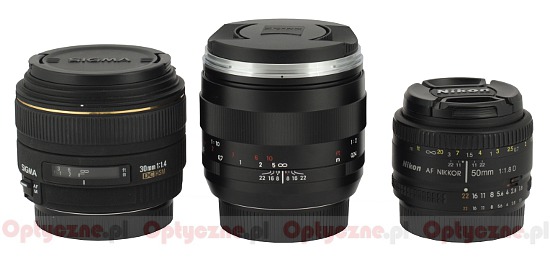 |
It’s also worth mentioning that Zeiss lenses differ among themselves when it comes to their appearance and the dimensions – it all depends on the mount. In the photo below you can notice very clearly that the Canon mount version is the biggest and also, as the only one, it lacks an aperture ring, featured in ZF.2 and ZK versions.
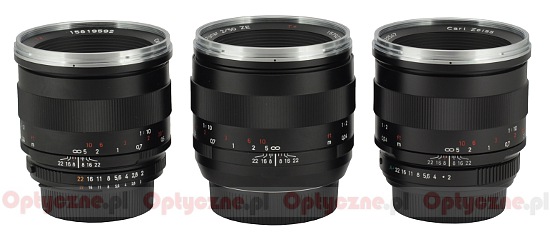 |
Buyers get both caps and a metal hood. The lens starts with a metal mount and contacts (in the ZF.2 and the ZE versions); they surround a rear element, 21 mm in diameter. When the focus is set at infinity the rear element is situated on the same level as the mount. After passing to the minimum focus the element hides inside the casing almost three centimeters deep and accordingly, while working in 1:2 scale, the lens becomes longer by those three centimeters.
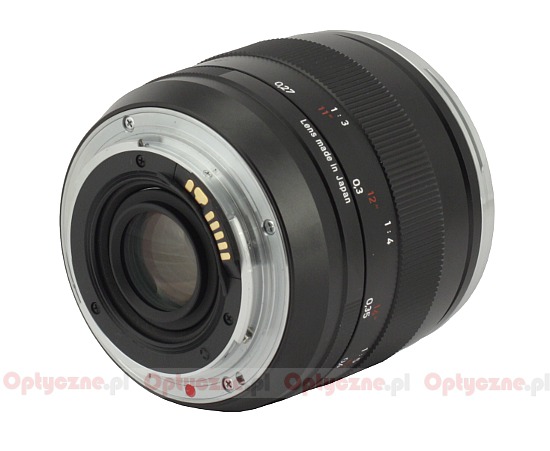 |
In the case of lenses with Nikon and Pentax mounts a narrow (less than 1 cm) manual aperture ring, with ribbed sides, is the first element on the proper casing. Its work is well-damped and it changes the aperture every 0.5 EV step.
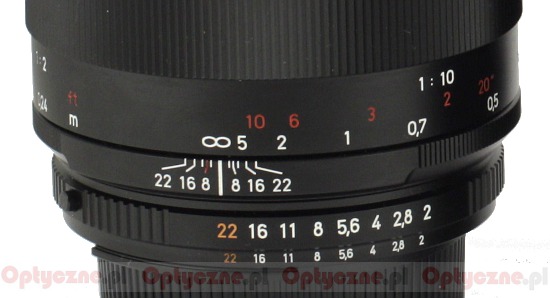 |
The next element of the casing is an immobile ring, also ribbed at both sides, which has a depth of field scale values given on the front for f/22, f/16 and f/8 apertures (you can also notice valueless markings for f/11 and f/5.6) and an inscription “Lens made in Japan” on the other side.
Further on you find the biggest part of the casing – a manual focus ring, 3.5 cm wide. About 1.5 cm of it is taken by ribs below which there is a distance scale expressed in feet and meters and also a magnification scale. The ring works very smoothly and is well damped. Running through the whole scale takes a turn through 300 degrees (the producer provides you a very precise value - 303 degrees exactly - in the specifications). It allows you very precise settings.
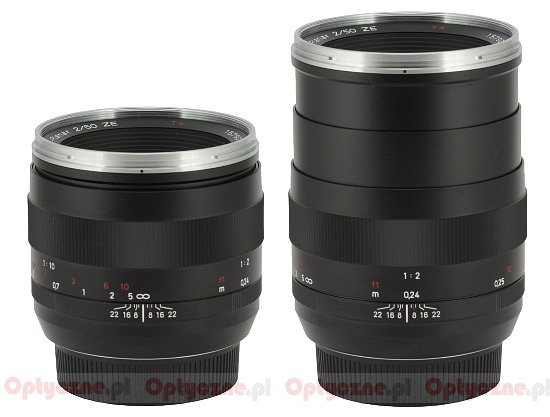 |
The lens ends with a silver, metal hood mount. The mount is extended on a telescopic inner tube when you pass to the minimum focusing distance. The metal mount is threaded on the inside and it allows you to use 67 mm filters. The front element of the lens is rather small and it hides inside the casing about four centimeters deep. It’s worth adding here that when you work in the macro mode (1:2) the photographed objects are situated in the distance of 9 centimeters from the silver rim of the lens.
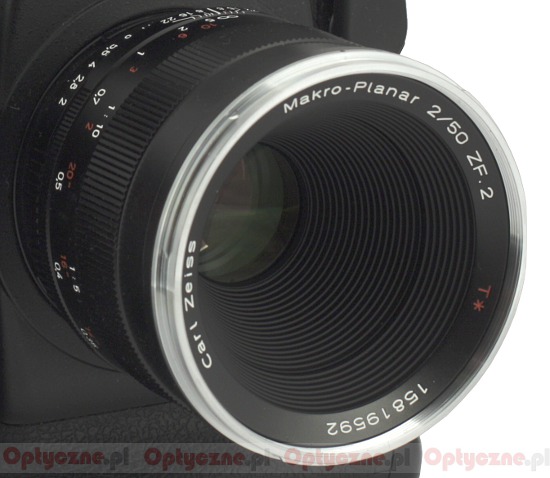 |
The optical construction consists of 8 elements positioned in 6 groups. You should notice how the macro system complicates the optics. The faster Planar 1.4/50 has 7 elements. Inside the lens there is also a circular aperture with nine blades which can be closed down to the value of f/22.
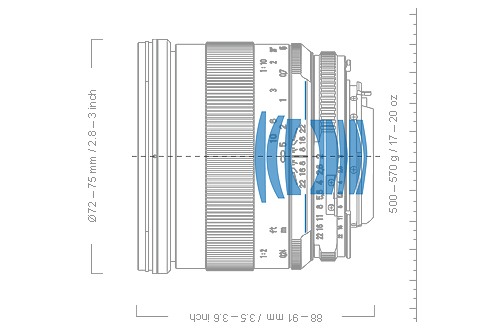 |
Buyers get both caps and a metal hood. Pity that for such a high price the producer didn’t decide to add a case of any kind.






